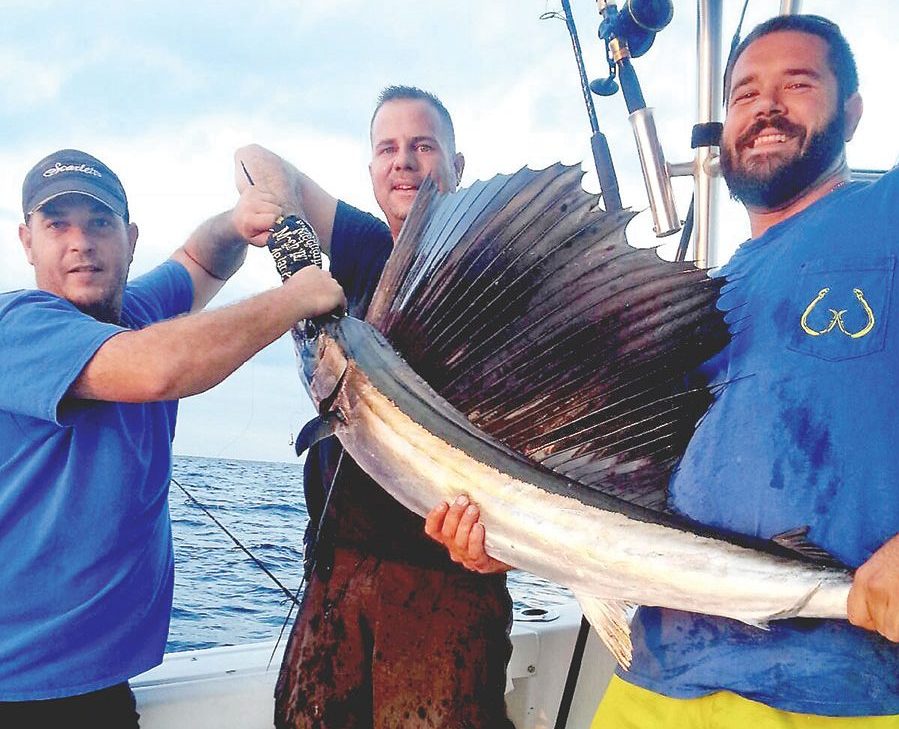
Whoever says that you have to be the early bird to catch the worm has probably never left the dock after 2 pm. This time of the year can produce some exciting action in the late afternoon, just a few miles off the beach. Sailfish, dolphin, kingfish, wahoo and cobia are just some of the species that might crash the party.
As the west wall of the gulf stream edges closer to our coastline combined with an easterly breeze and an outgoing tide, the fish will get closer to the beach to feed. Kite fishing live baits such as pilchards and goggle-eyes on 20-30 pound high-speed conventional outfits is your best bet. If you don’t have kite gear, you can still take advantage of the bite by drifting flat lines. 20-pound spinning outfits are the ticket for the flat lines. Blue runners, goggle-eyes, ballyhoo, and pilchards are all great baits for flat lines. Fishing three flat lines are ideal. I suggest fishing your first bait far away from the boat. Fish your second bait about half way between your first bait and the boat. Fish your third bait with 4 to 6 ounces of lead to cover more of the water column. If you can’t find live bait, fish dead ballyhoo on old school triple hook rigs with ½ to 2 ounces of lead. This technique is deadly for kingfish.
Look for clean water or an edge in 250 to 300 feet of water to start your drift. As you drift closer to the beach, keep an eye out for birds or other signs of life and adjust the start of your next drift accordingly. Don’t be afraid to continue your drift into 50 or 60 feet as dolphin have been caught in as little as 20 feet of water when the ballyhoo tend to gather over the shallow patch reefs just off the beach.

